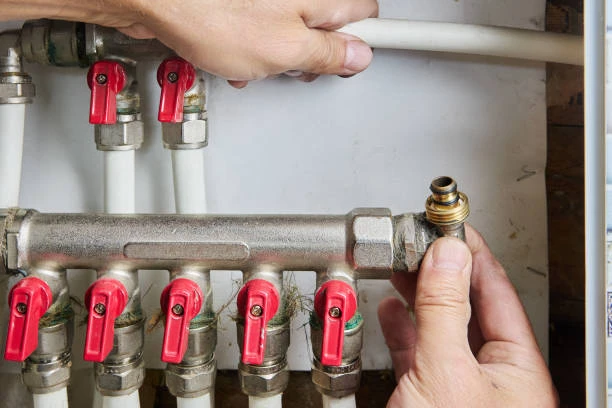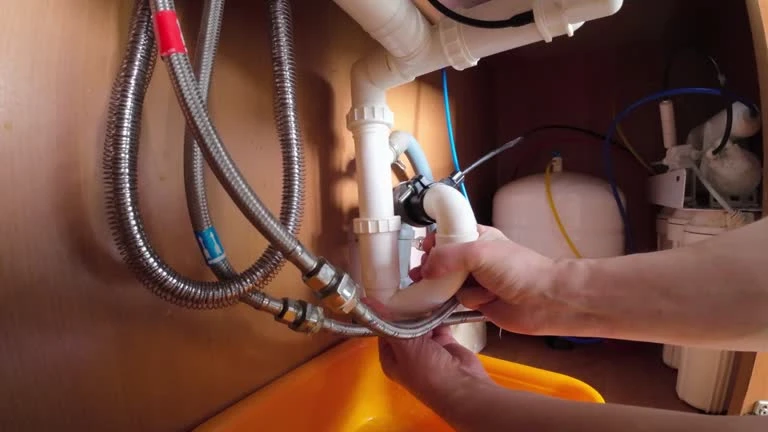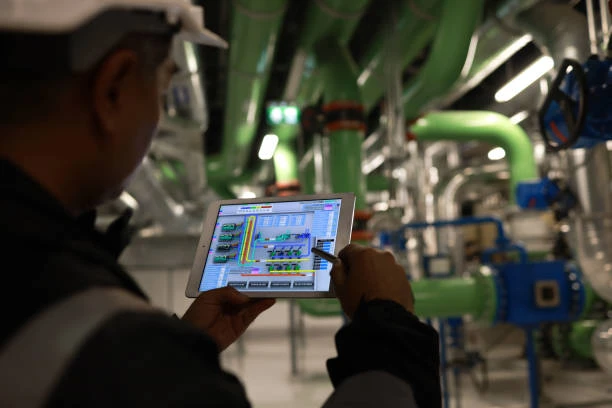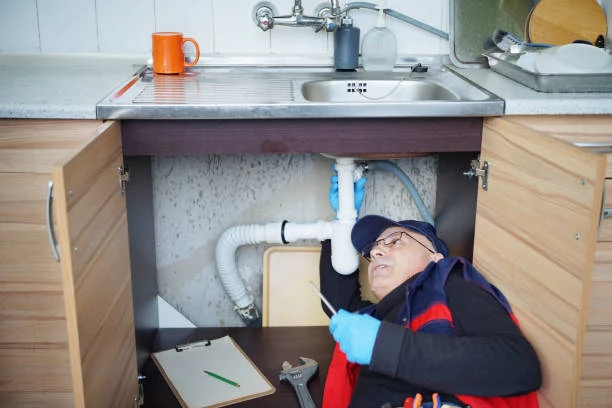Quickly Grasp Copper Faucet Installation Skills
Installing a copper faucet, whether traditional or induction type, requires a solid understanding of plumbing basics and careful attention to detail. With the increasing popularity of induction faucets—especially in public and commercial spaces—more users are turning to copper models for their hygienic, durable, and aesthetically pleasing features.
This guide explains everything you need to know to successfully install a copper faucet, including frequently asked questions, an overview of valve technology, common uses, material comparisons, and key installation tips. By the end of this article, you’ll feel confident in selecting and setting up a copper induction faucet or any other style for your bathroom, kitchen, or commercial space.
Frequently Asked Questions (FAQ)
1. What is an induction faucet?
An induction faucet, also known as a sensor faucet, is a touchless system that activates water flow through motion detection. It’s commonly used in restrooms, kitchens, and healthcare facilities.
2. Are copper induction faucets available?
Yes, many modern faucet manufacturers offer copper induction faucets that combine hygienic features with durable and elegant copper finishes.
3. Do induction faucets work with standard water pressure?
Yes, most induction faucets are designed to work efficiently with regular residential or commercial water pressure systems.
4. Are copper faucets resistant to corrosion and bacteria?
Copper naturally resists corrosion and has antimicrobial properties, making it an excellent material for faucets in kitchens and healthcare environments.
5. Can I install a copper induction faucet without professional help?
While installation is straightforward for standard faucets, induction faucets may require wiring for the sensor and power source, so it’s recommended to consult a plumber or electrician.
What Is a Valve and What Are Its Features?
Valves are the core components within any faucet system. In both manual and induction faucet sets, valves regulate water flow, maintain temperature control, and prevent leaks. In copper faucet systems, valves are often paired with ceramic discs for optimal performance.
Key valve features include:
Smooth flow control – Ensures accurate and consistent water delivery.
Leak prevention – High-quality valves reduce the chance of dripping.
High-pressure resistance – Withstands modern plumbing pressure levels.
Durability – Long-lasting, especially when combined with copper housing.
Compatibility – Suitable for use in both residential and commercial pipe systems.
Modern induction faucets often use solenoid valves that react instantly to sensor input, which is particularly important for hygiene-focused spaces like clinics and public washrooms.
Common Applications and Industries
Copper faucets, including induction types, are widely used across industries due to their combination of function and appearance. Below are common applications:
Homes – Especially in kitchens and bathrooms, where cleanliness and durability are key.
Hospitals and clinics – Induction faucets reduce the spread of bacteria.
Restaurants and hotels – Aesthetic appeal combined with low-maintenance performance.
Schools and public buildings – Minimises water waste and improves hygiene.
Laboratories and clean rooms – Where touchless operation is essential.
Copper induction faucets are ideal where hands-free control and antimicrobial surfaces are desirable.
Buying Guide: Choosing the Right Copper Faucet
Selecting the right copper faucet—manual or induction—can be simple if you know what to look for. Consider these criteria:
1. Material Type
Opt for solid copper or copper-alloy faucets with lead-free certification. Avoid copper-coloured coatings on inferior metals.
2. Valve Mechanism
Choose ceramic disc valves for manual faucets or solenoid valves for induction systems. They offer superior durability and better flow control.
3. Finish and Appearance
Popular copper finishes include polished, antique, and brushed. Match the finish with your basin and interior design for a cohesive look.
4. Certification
Look for products that meet international standards like ISO 21003, ASTM F1974, and DIN 16836. Certified products ensure safety and performance.
5. Sensor Technology (for induction models)
Select sensors with fast response times, energy efficiency, and adjustable sensitivity. Battery-powered and hard-wired options are available.
6. Manufacturer Support
Work with trusted suppliers like IFAN, who provide detailed product specifications, technical support, and responsive service.
Installation Tips for Copper Faucet Sets
Installing a copper faucet requires care, especially when working with induction models. Follow these tips for a successful installation:
Turn Off the Water Supply
Before beginning, ensure the water supply is shut off and the pipes are drained.Check All Components
Verify that the faucet set includes the correct valves, hoses, mounting hardware, and—for induction types—the sensor and power supply.Prepare the Mounting Area
Clean the surface where the faucet will be installed. Remove old fittings and debris to ensure a tight seal.Install the Faucet Body
Position the faucet body correctly over the sink hole. Use washers and gaskets as needed to secure it without overtightening.Connect Water Lines
Attach hot and cold lines securely. Use Teflon tape to prevent leaks and ensure a tight seal.Install and Connect the Sensor (if applicable)
Mount the sensor under the sink or within the faucet base, depending on the model. Follow the wiring guide to connect to a power source—battery or adapter.Test the System
Once everything is connected, slowly turn on the water and test the faucet. For induction models, check for proper sensor activation and automatic shut-off.Final Adjustments
Adjust the flow and sensor range settings if necessary. Ensure there are no leaks and that the faucet operates smoothly.
Copper vs Other Valve Materials: A Detailed Comparison
| Feature | Copper Valves | Brass Valves | Stainless Steel Valves | Plastic Valves |
|---|---|---|---|---|
| Durability | Excellent | Very Good | Excellent | Moderate |
| Corrosion Resistance | High | Moderate | High | Low |
| Antibacterial | Yes | Limited | No | No |
| Heat Resistance | Excellent | Good | Excellent | Poor |
| Visual Appeal | Classic and Elegant | Traditional | Modern | Basic |
| Installation Flexibility | High | High | Moderate | High |
| Eco-Friendliness | Fully Recyclable | Recyclable | Recyclable | Less Recyclable |
| Sensor Compatibility | High (Induction Models) | Moderate | High | Limited |
Copper valves, especially in induction faucets, offer a superior blend of hygiene, performance, and visual appeal. While stainless steel and brass are durable, copper stands out for its antimicrobial qualities and aesthetic value.
Conclusion
Installing a copper faucet—particularly an induction model—does not have to be complex. With the right tools, knowledge, and product choice, you can enjoy the benefits of a long-lasting, hygienic, and stylish faucet in your space. Copper’s natural properties make it especially suited for modern needs, blending tradition with technology.
Whether you’re upgrading your home or fitting out a commercial facility, a copper faucet brings both function and beauty. And when you choose a trusted manufacturer like IFAN, you get quality, support, and peace of mind.
Contact IFAN for Catalogs and Samples
Need technical documents, product samples, or full catalogues?
For more information,pls visit our webside https://waterpipefitting.com/
Pls Mailto: [email protected]
Whatsapp: +86 15088288323
Our team responds quickly to provide expert support for copper fittings, valves, and complete faucet solutions. IFAN’s team is here to help you find the right induction faucet or plumbing system product to meet your project needs.
IFAN International Standard
All IFAN piping systems and copper valves comply with major international standards, ensuring consistent quality and global compatibility:
ASTM F1974 – Standards for multilayer piping systems in the US
ASTM F1281 – Thermoplastic/aluminium composite piping
CSA B137 – Canadian plastic pressure piping systems
DIN 16836 – German multilayer pipe specifications
GB18997 – Chinese national standard for piping systems
ISO 21003 – Global standard for hot and cold water multilayer systems
These certifications show IFAN’s commitment to reliable performance and international compliance, making it easier for partners and customers worldwide to trust IFAN products.














Recent Comments